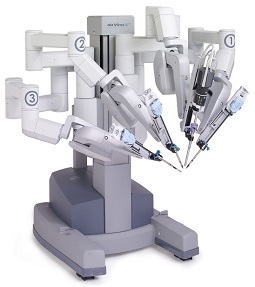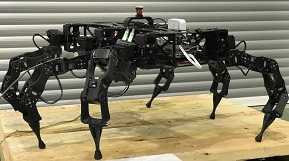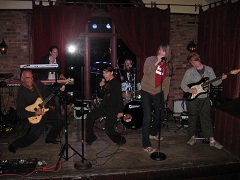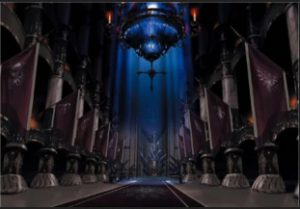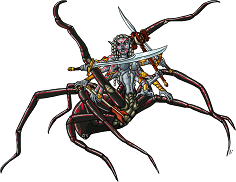This is mark Joseph “young” blog entry #390, on the subject of World Facilities.
With permission of Valdron Inc I have previously completed publishing my first six novels, Verse Three, Chapter One: The First Multiverser Novel, Old Verses New, For Better or Verse, Spy Verses, Garden of Versers, and Versers Versus Versers, in serialized form on the web (those links will take you to the table of contents for each book). Along with each book there was also a series of web log posts looking at the writing process, the decisions and choices that delivered the final product; those posts are indexed with the chapters in the tables of contents pages. Now as I am posting the seventh, Re Verse All, I am again offering a set of “behind the writings” insights. This “behind the writings” look may contain spoilers because it sometimes talks about my expectations for the futures of the characters and stories–although it sometimes raises ideas that were never pursued, as being written partially concurrently with the story it sometimes discusses where I thought it was headed. You might want to read the referenced chapters before reading this look at them. Links below (the section headings) will take you to the specific individual chapters being discussed, and there are (or will soon be) links on those pages to bring you back hopefully to the same point here.
There is also a section of the site, Multiverser Novel Support Pages, in which I have begun to place materials related to the novels beginning with character papers for the major characters, giving them at different stages as they move through the books.
This is the seventeenth mark Joseph “young” web log post covering this book, covering chapters 97 through 102. It was suggested that more shorter posts were a better choice than fewer longer ones, so there will be posts every six chapters, that is, every other week, for this book. Previous entries were:
- #354: Versers Reorienting, covering chapters 1 through 6;
- #355: Versers Resettling, for chapters 7 through 12.
- #357: Characters Connect, for chapters 13 through 18.
- #359: Characters Engage, for chapters 19 through 24.
- #361: Characters Explore, for chapters 25 through 30.
- #364: Characters Learn, for chapters 31 through 36.
- #365: Characters Travel, for chapters 37 through 42.
- #367: Versers Encounter, for chapters 43 through 48.
- #370: Characters Confront, for chapters 49 through 54.
- #373: Nervous Characters, for chapters 55 through 60.
- #376: Characters Arrive, for chapters 61 through 66.
- #379: Character Conundrums, for chapters 67 through 72.
- #381: World Complications, for chapters 73 through 78.
- #383: Character Departures, for chapters 79 through 84.
- #385: Characters Ascend, for chapters 85 through 90.
- #388: Versers Climb, for chapters 91 through 96.
History of the series, including the reason it started, the origins of character names and details, and many of the ideas, are in earlier posts, and won’t be repeated here.
Quick links to discussions in this page:
Chapter 97, Takano 43
Chapter 98, Beam 91
Chapter 99, Hastings 217
Chapter 100, Beam 92
Chapter 101, Takano 44
Chapter 102, Beam 93
The recognition that the girls were going to need a bathroom was the starting point, and the recollection that Tommy was pretty dirty from crawling through the woods suggested showers and laundry, and that turned this into a day in the apartments instead of continued travel.
I had been teasing the accident for maybe too long, and knew it had to happen despite the fact that I had a long climb ahead and should have more vehicle encounters the closer I got to the top. I was not certain how to run it, but decided that something Beam couldn’t observe was best.
I realized that this interrupted the ascent, and particularly that Beam was going to have to decide whether to try to climb this link twice or put it off until tomorrow. I already knew that he was going to have to go all the way back to the lower level to call for medical help, so the decision was going to face him in the next chapter.
Grits with strawberries and cream was something I had probably last January (2020) at a Christian Musicians Network breakfast meeting. I’m also fond of fried eggs on pancakes, and syrup goes well with that, and sausage with syrup. The notion that she had to pick what kind of sausage made sense in the context.
The conversation arose somewhat naturally.
I’d had the notion of ordering bag lunches, but Tommy is right, it’s easier to stop along the way. The idea of tipping the driver was abrupt.
The notion that the medbots would recognize Beam as being in respiratory distress came to me somewhat abruptly, although it may have been inspired in part because I was wondering how soon I could take a respiratory treatment myself, as I was wanting not to take it too soon but recognizing that I needed to do so before I left for a doctor appointment.
This conversation just sort of happened. I knew they had to eat, and they were doing big breakfasts and should sit a bit before they exerted themselves. I remembered that they had camped the night and would have things to pack, so I did that and then settled them in the living room. They weren’t going to talk about anything immediately, but soon enough I got things started, and then moved them on their journey.
It struck me that Beam kept finding restaurants that would seat over a hundred people, which was a very improbable capacity. I thought of seafood restaurants because I had just published something that mentioned The Lobster House and I remembered taking John, on whom Beam is modeled, there once and having him order chicken. I started the idea of moving everyone in, and realized that this might be smaller, so I set the pizza place down the hall and split the group.
I felt that a memorial service was needed, and I also felt that Beam had no talent for this, so that’s what I got. I’ve written several articles on the notion that I rarely ever see funerals in role playing games, and that might have impacted my decision to include one here.
This has been the seventeenth behind the writings look at Re Verse All. If there is interest and continued support from readers we will endeavor to continue with another novel and more behind the writings posts for it.
